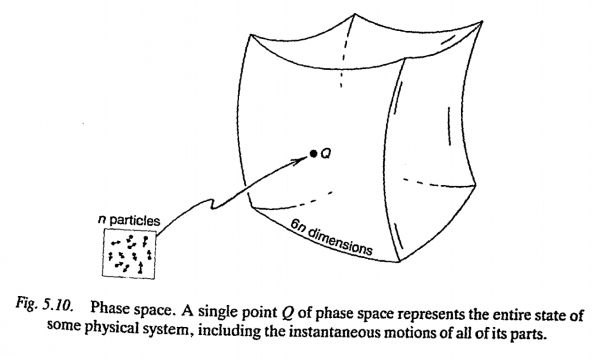Physics Lournal
Powered by 🌱Roam GardenSpace-Time Structure May Be Topological Not Geometrical
Abstract: This paper will attempt to put forth a set of conditions from which an indication that the structures required to describe space time at the Planck scale are topological, not geometrical, can be drawn.
Introduction
This paper is related to a project, which desires to find the minimal set of assumptions from which the basic theories of physics can be derived.
In physics, topology captures what is experimentally verifiable (logically sound/well founded).
The fact that a continuous quantity has a precise value is not an experimentally verifiable fact.
This clarifies a division between topology, and geometry- topological constructs are more primitive than geometrical ones because they have no idea of size.
I would assume this has something to do with the fact that geometry is tied to Euclidean space, because the 3rd spatial dimension (width) is necessary for something to have size as we think about it. What's odd for me is not so much the concept of a sizeless square of infinite length and height in 2D space, but the idea that, "reality" was at some point 2D. how?!
I suppose anyons might shed some light on this.
This means prior to assessing the distance between points, we must distinguish them- this insight helps understand how different topologically equivalent sections of space, can have different Riemannian geometry.
On Phase Space, within a singular dimension, units of position, cannot be compared to units of momentum.
A Phase Space is a mathematical tool that allows us to grasp important aspects of complicated systems. - Physics Travel Guide.

Before we assess whether space-time is a geometrically Riemannian manifold, we need to understand whether space-time is topologically a manifold.
A manifold, is a set of possible cases {}, that can be mapped onto a set of real values.
So, one question is, when can a set of possibilities, be experimentally identified by a set of real values?
This leads us to a rephrasing of the question:
When are the cases we want to distinguish parameterized by the real line?
Assuming real line refers to , are we asking when each of the possibility variables can be mapped onto the real line?
Perhaps, given , could there be a possibility that we can verify, by replacing its parameters with "arguments" that exist on the real line?
Since space-time in relativity is four dimensional, it would seem like we're ignoring the most interesting cases, by excluding higher dimensional spaces, but the issue here is time- we must be able to use the time coordinate as the affine (allowing for the preservation or existence of parallel relationships) parameter for the evolution of a particle:
.
Functions must be topologically continuous, to avoid breaking experimental verifiability (the mapping of one set of verifiable statements to another).
Because we are including the evolution of time, the topology we give time, will be a major constraint on the topology of the space in which it the evolution will occur.
Furthermore, the reverse argument is true as well: the topology we give space, must be the same as the one given to time, because spatial distance, can be used as a time parameter, i.e. two ships drifting at constant velocity can use the distance between them as a clock.
Space Condition:
We still need and , for time, but also need and , for our ships, and then we have to bundle up both ships in the Space condition.
So, for any times and ships , then
1.1 Summary of results:
Mathematics offers the ability to produce the real numbers from primitive notions.
Thinking about how quantities are measured, we realize we can define references, with preset amounts, that we then compare to our object, to find some upper and lower bound.
A ruler is a series of marks and measuring position with it, means finding the closest tick mark (to said position?).
A clock is a similarly performing series of ticks.
I just got how time can act like a ruler...and thus get shorter at the speed of light.
Thus we understand a quantity is continuous, if, we can compare references ever closer to the quantity.
References here, seem to be asymptotic(?) here- the limit of the reference point is the quantity (?0_o).